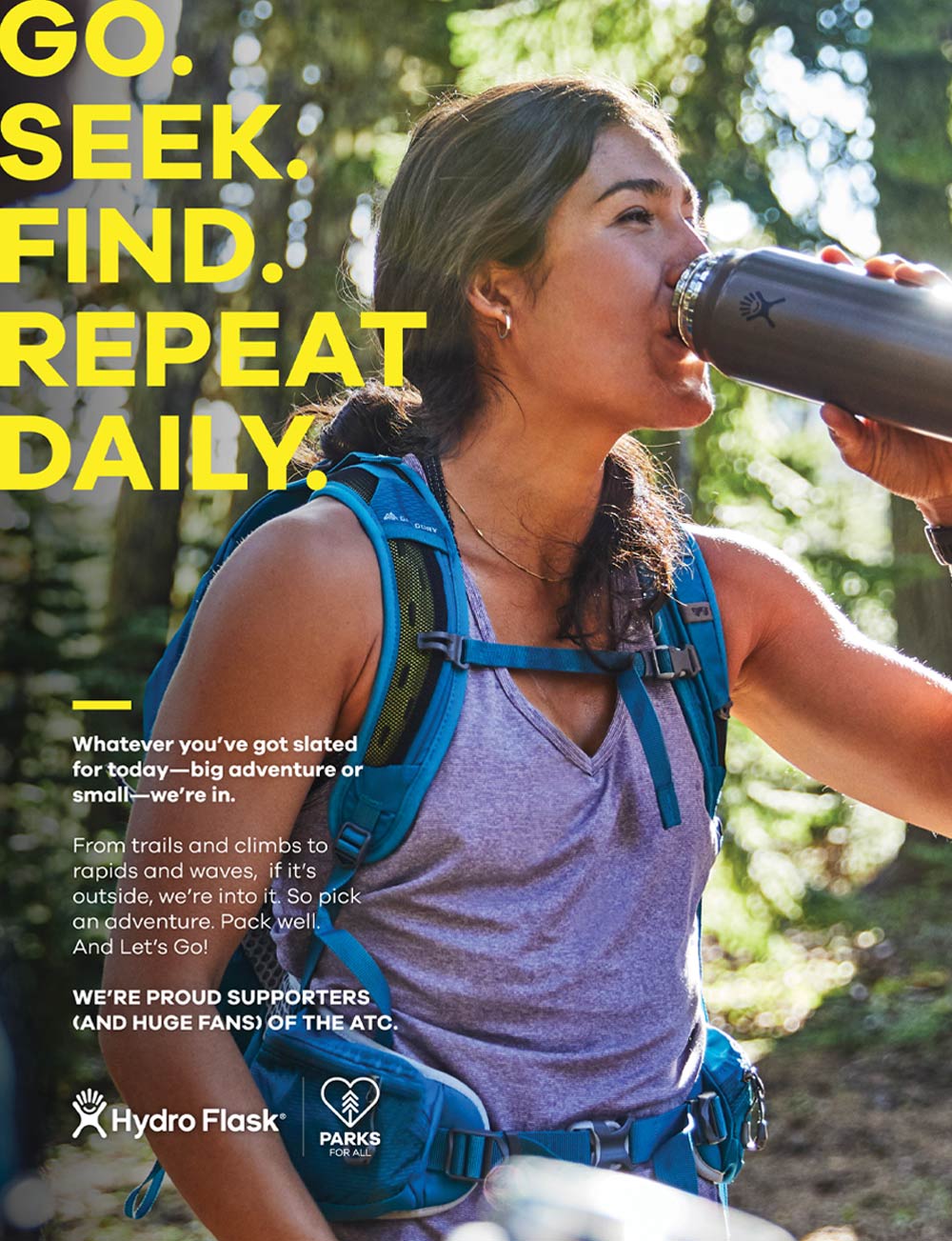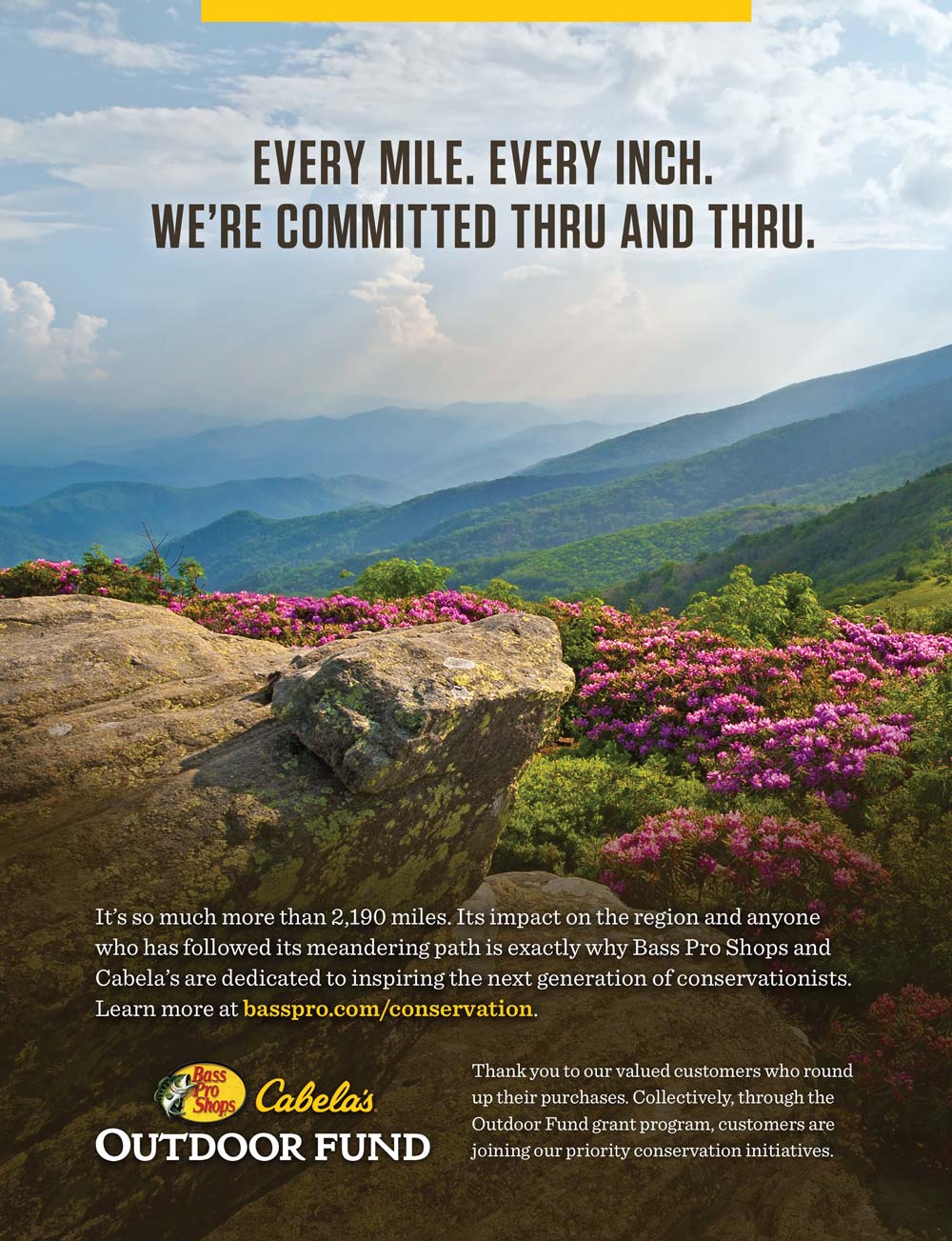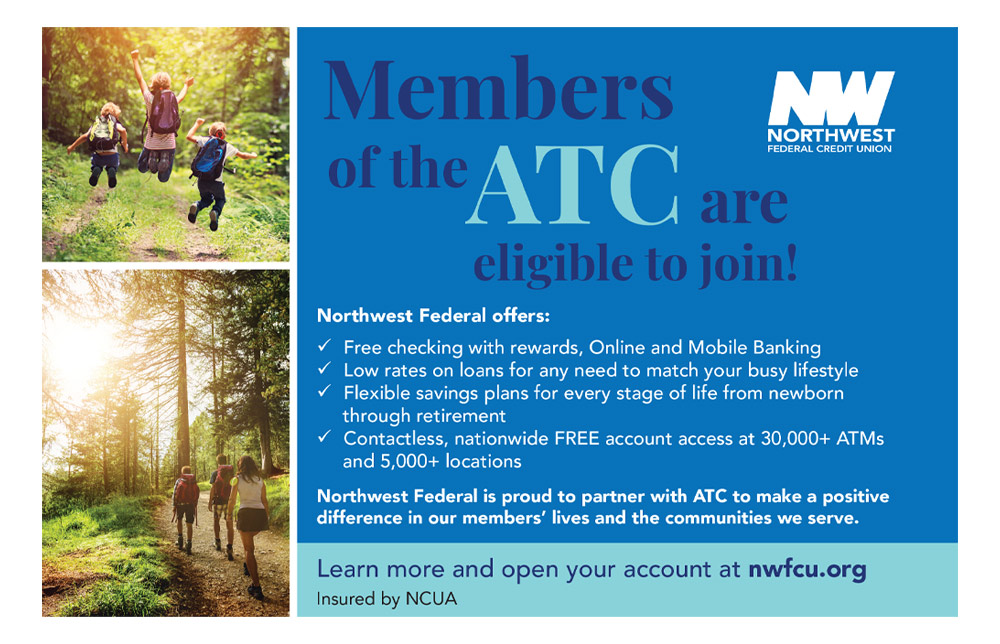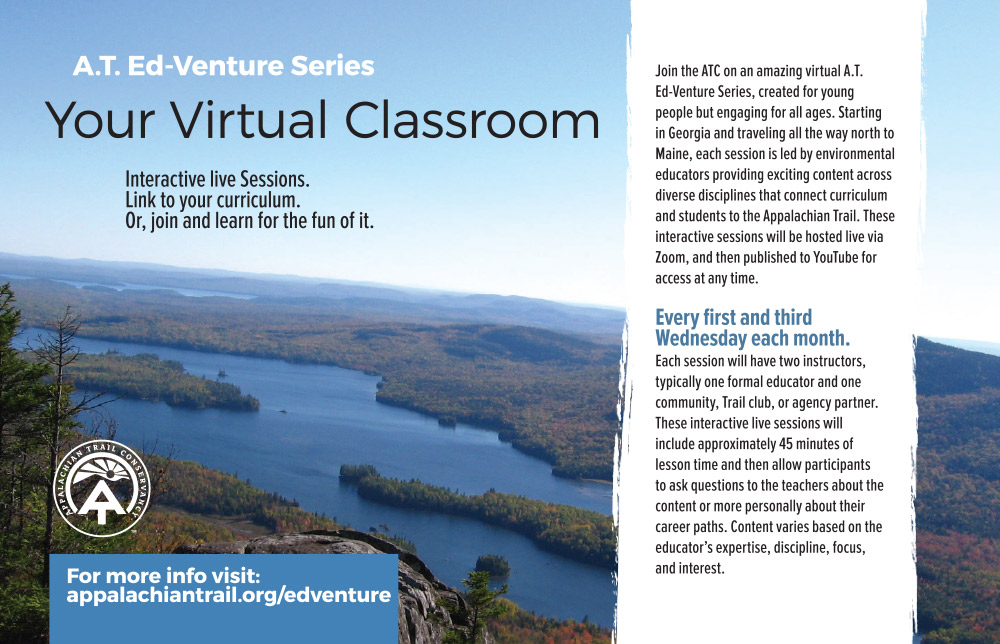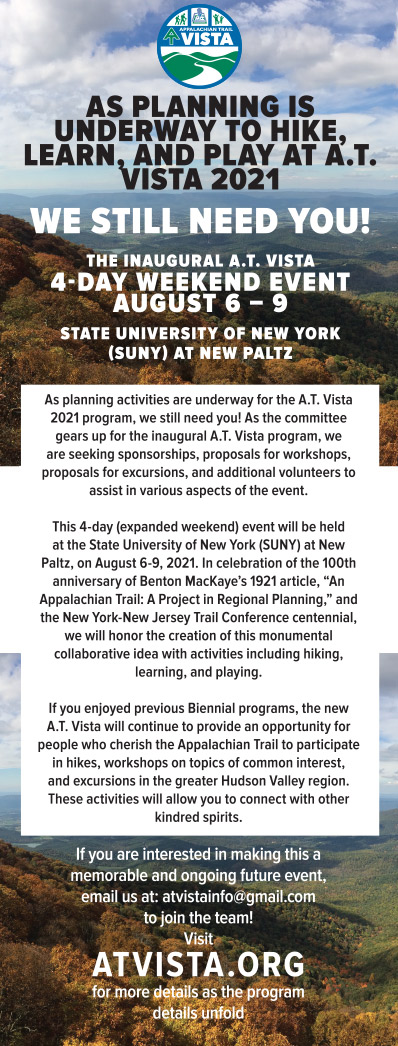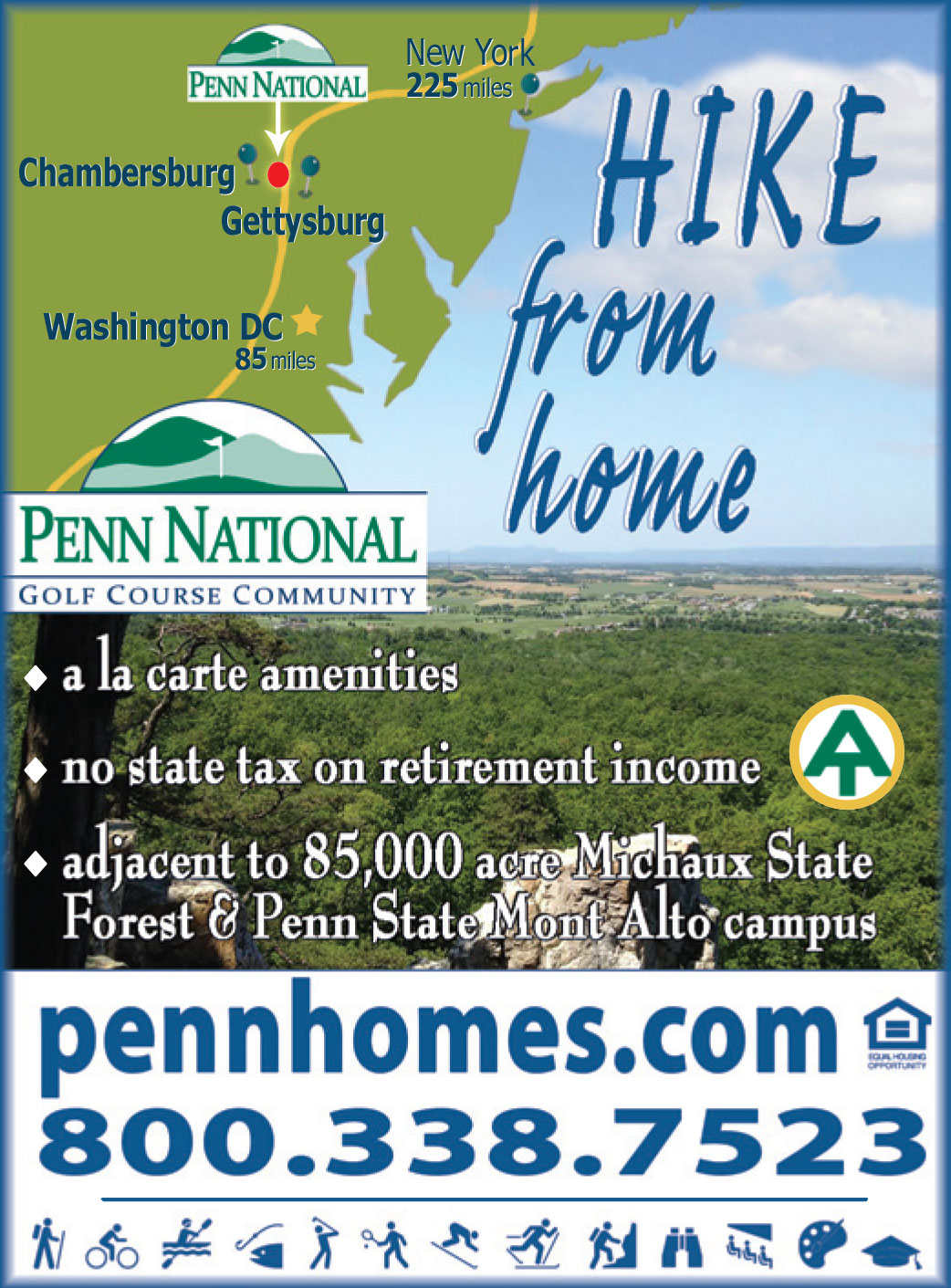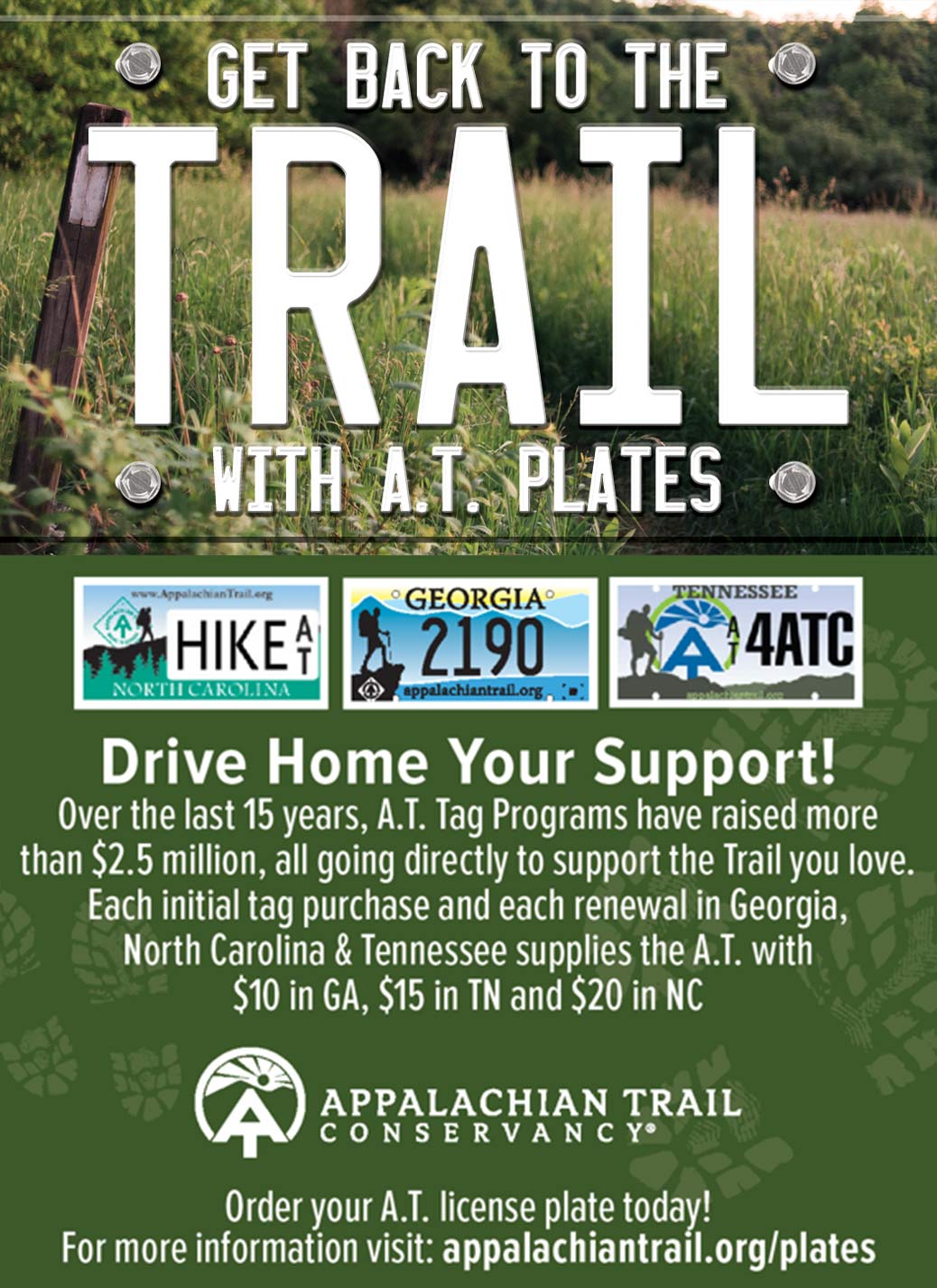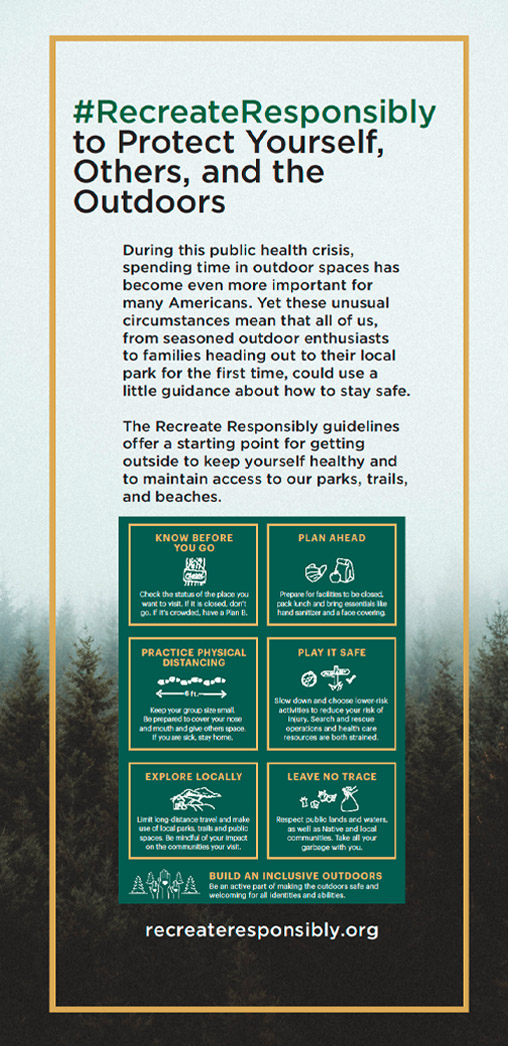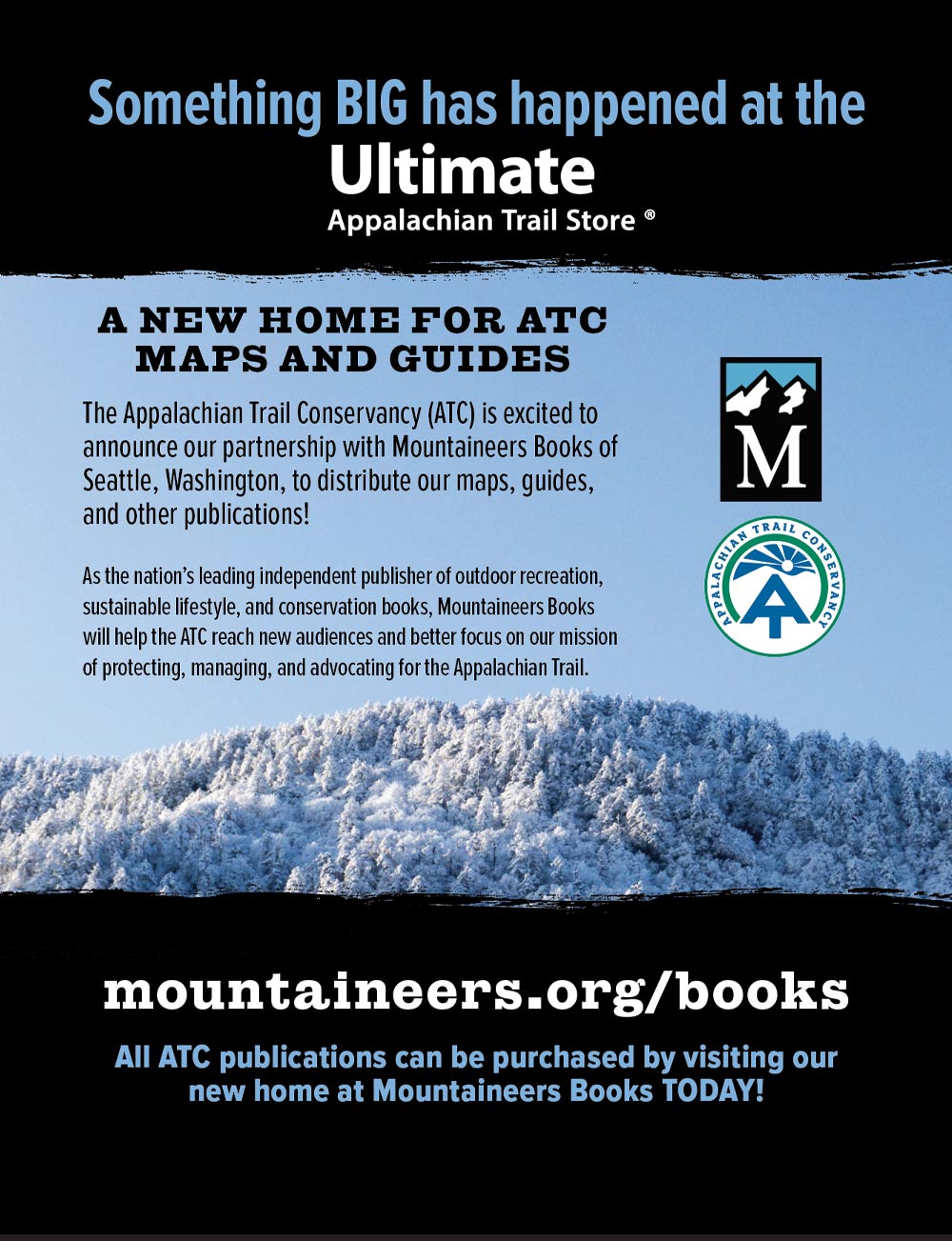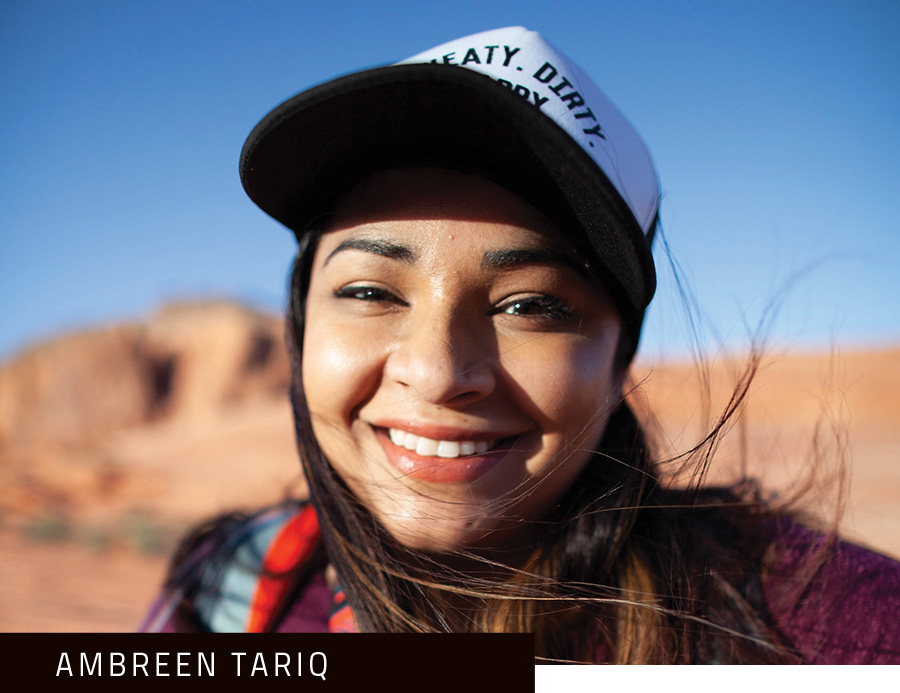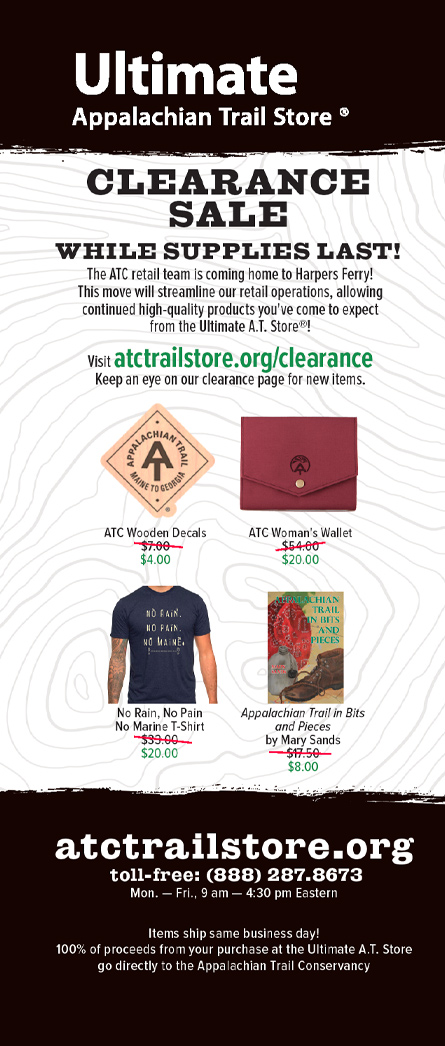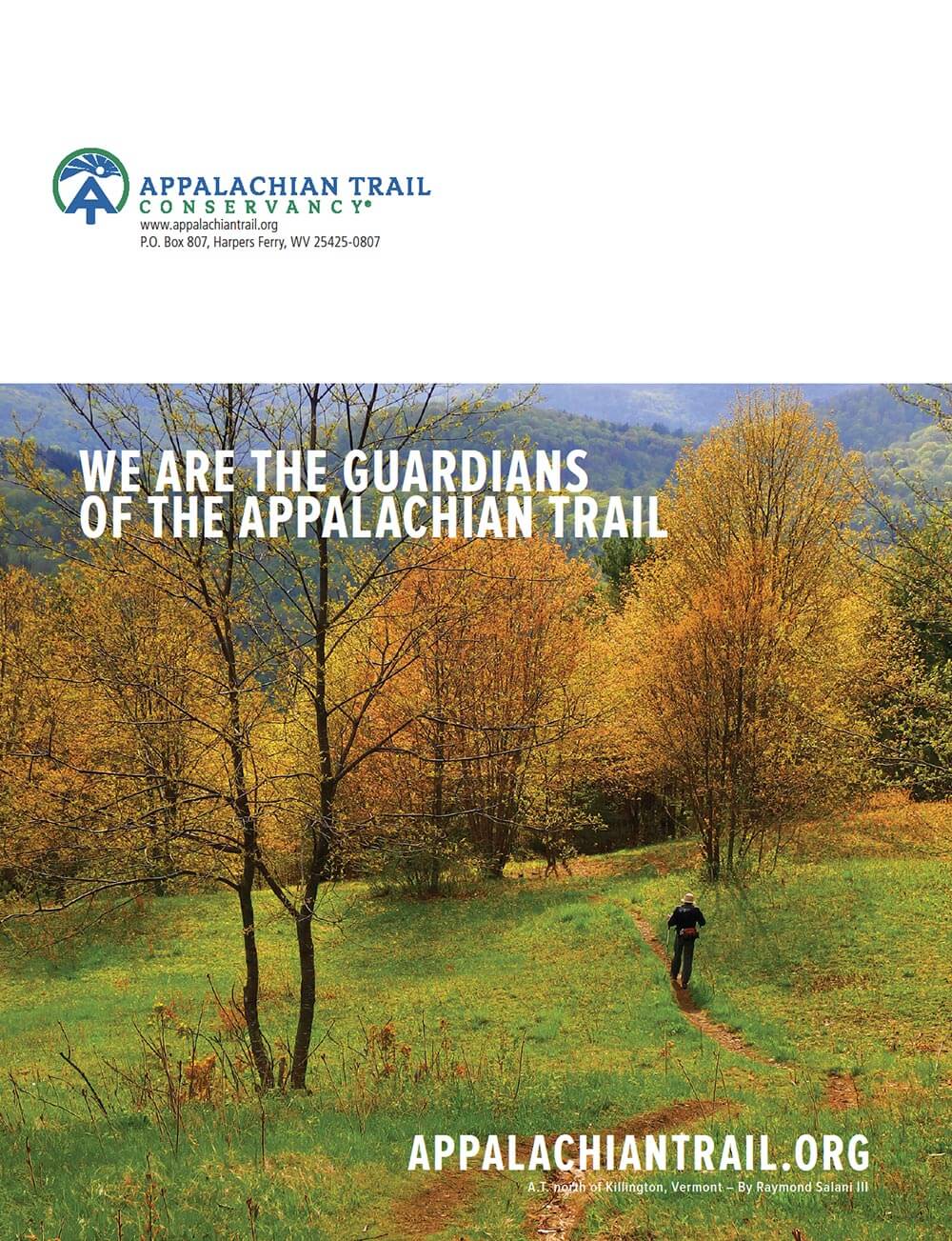ON THE COVER
Janet Lake and her granddaughter
Josephine Decker enjoy the Trail at
Lovers Leap in Hot Springs, North
Carolina – By Sarah Jones Decker
Above: A.T. – Pochuck Boardwalk,
New Jersey – By Raymond Salani III
ON THE COVER
Janet Lake and her granddaughter
Josephine Decker enjoy the Trail at
Lovers Leap in Hot Springs, North
Carolina – By Sarah Jones Decker
Above: A.T. – Pochuck Boardwalk,
New Jersey – By Raymond Salani III

Sandra Marra / President & CEO
Nicole Prorock / Chief Financial Officer
Shalin Desai / Vice President of Advancement
Laura Belleville / Vice President of Conservation & Trail Programs
Cherie A. Nikosey / Vice President of Administration
Brian B. King / Publisher & Archivist
Wendy K. Probst / Editor in Chief
Traci Anfuso-Young / Art Director / Designer
Jordan Bowman / Director of Communications
Laurie Potteiger / Information Services Manager
Brittany Jennings / Proofreader
The Appalachian Trail Conservancy’s mission is to protect, manage, and advocate for the Appalachian National Scenic Trail.
Colin Beasley / Chair
Robert Hutchinson / Vice Chair
Edward R. Guyot / Secretary
Jim LaTorre / Treasurer
Daniel A. Howe / Stewardship Council Chair
Grant Davies
Norman P. Findley
Thomas L. Gregg
John Knapp, Jr.
Ann Heilman Murphy
Colleen Peterson
Eboni Preston
Nathan G. Rogers
Rubén Rosales
Patricia D. Shannon
Rajinder (Raj) Singh
Ambreen Tariq
Hon. Stephanie Martz
Diana Christopulos
Jim Fetig
Lisa Koteen Gerchick
Mark Kent
R. Michael Leonard
Robert Rich
Hon. C. Stewart Verdery, Jr.
For membership questions or to become a member, call: (304) 885-0460
![]()
[email protected]
A.T. Journeys is published four times per year. Advertising revenues directly support the publication and production of the magazine, and help meet Appalachian Trail Conservancy objectives. For more information and advertising rates, visit: appalachiantrail.org/atjadvertising
MISSION
The Appalachian Trail Conservancy’s mission is to protect, manage, and advocate for the Appalachian National Scenic Trail.
Colin Beasley / Chair
Robert Hutchinson / Vice Chair
Edward R. Guyot / Secretary
Jim LaTorre / Treasurer
Daniel A. Howe / Stewardship Council Chair
Grant Davies
Norman P. Findley
Thomas L. Gregg
John Knapp, Jr.
Ann Heilman Murphy
Colleen Peterson
Eboni Preston
Nathan G. Rogers
Rubén Rosales
Patricia D. Shannon
Rajinder (Raj) Singh
Ambreen Tariq
Hon. Stephanie Martz
Diana Christopulos
Jim Fetig
Lisa Koteen Gerchick
Mark Kent
R. Michael Leonard
Robert Rich
Hon. C. Stewart Verdery, Jr.
A.T. Journeys is published on Somerset matte paper manufactured by Sappi North America mills and distributors that follow responsible forestry practices. It is printed with Soy Seal certified ink in the U.S.A. by Sheridan NH in Hanover, New Hampshire.
A.T. Journeys ( ISSN 1556-2751) is published quarterly for $15 a year by the Appalachian Trail Conservancy, 799 Washington Street, Harpers Ferry, WV 25425, (304) 535-6331. Bulk-rate postage paid at Harpers Ferry, West Virginia, and other offices. Postmaster: Send change-of-address Form 3575 to A.T. Journeys, P.O. Box 807, Harpers Ferry, WV 25425.

~Matt Stevens

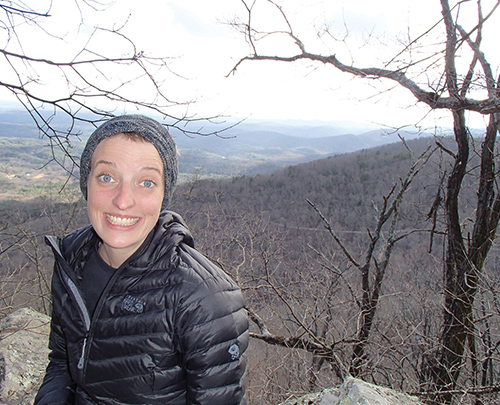
Chloë de Camara
Chloë de Camara has spent most of her life in western North Carolina. Although she lived in Europe for a year during college, thru-hiked the A.T. in 2015, and lived inside the Great Smoky Mountains National Park for approximately two years, North Carolina has always called her back. Growing up the youngest of five kids made finding solitude in the outdoors a welcomed respite. “I love meeting new people and learning how they connect to the outdoors,” she says. Chloë has been working with the Appalachian Trail Conservancy (ATC) since 2015, managing ridgerunners, educating novice hikers on how to hike the A.T., and working with professional educators and students finding creative ways to incorporate public lands into standardized curriculum. Her current role as the ATC’s Trail education specialist suits her perfectly. (Beyond Hiking page 28)
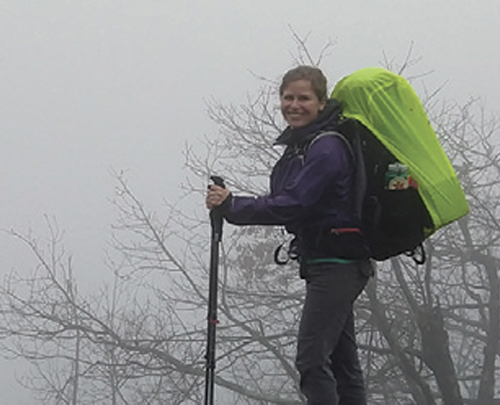
Carmen Kraus
Carmen Kraus is a scientist and artist from Athens, Georgia, a city that has the distinction of being a two-hour drive from Springer Mountain. After completing dual bachelor’s degrees in ecology and science illustration and a master’s in plant genetics, she hoped to finally hit the Trail. The pandemic ruined her plans of a 2020 thru-hike (Postponing a Dream page 44), but that setback has only increased her determination to complete the Trail someday. A clip of her story was recently included in “Where We Walk,” from the podcast She Explores. “I didn’t have the A.T. experience I wanted or planned for this year, so sharing my story with ‘Where We Walk’ and A.T. Journeys was very powerful for me,” she says. “It has honestly made me feel more a part of the Trail community — a community I was so devastated to leave in March.” Carmen’s chosen luxury items for backpacking are a sketchbook and her favorite brush tip pens.
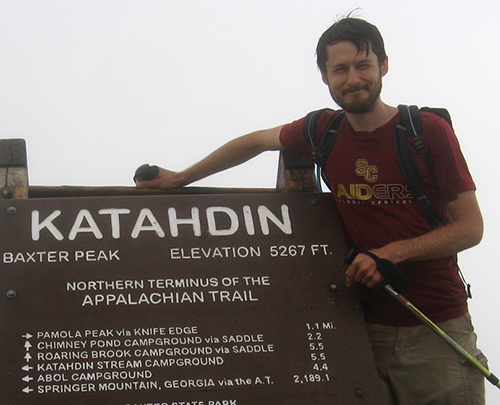
Keane Southard
Keane Southard is a composer and pianist from New England. He hiked the New England portion of the A.T. in 2016 and then composed a symphony inspired by the experience, which was commissioned by a consortium of orchestras around New England and has been performed four times to date. Keane received his B.M. in music composition and theory from Baldwin Wallace University, his M.M. in composition from the University of Colorado-Boulder, and is currently a Ph.D. student in composition at the Eastman School of Music (University of Rochester). “I was interested in writing this article because my experience hiking the A.T. was life changing, and I was able to keep that experience alive and share it with others in a unique way,” says Keane. (Parting Thought page 54) He would love to hike the rest of the A.T. one day and perhaps compose another symphony or two inspired by it.
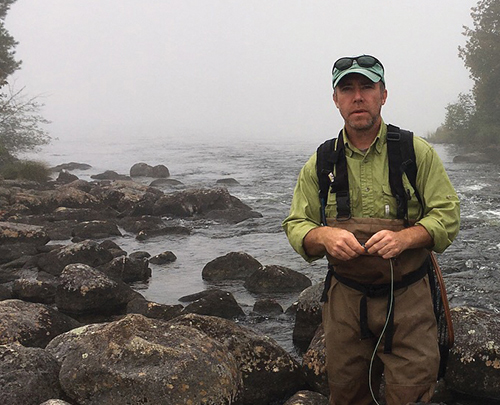
Matt Stevens
Originally from central New York, Matt Stevens now lives in New Hampshire’s Connecticut River Valley where he serves as the Appalachian Trail Conservancy’s (ATC) conservation resources manager for Vermont and New Hampshire. Matt came to the ATC after earning a Master’s degree in Resource Management in 2001. His first steps on the A.T. were at Vermont’s Clarendon Gorge while searching for Mill River brook trout in 1985. “It was unintentional,” he says. “I was looking for a way to get down to the water and this little trail with white blazes took me right where I wanted to be.” That experience eventually led to three seasons as a field staff member with the Green Mountain Club. “For as long as I can remember I have been captivated by flowing water; where it comes from, where it goes and all that happens along the way,” Matt says. “Trails are like that too. And working where these two things constantly intersect is a great boon for me.” (Indigenous: Eastern Brook Trout page 46)
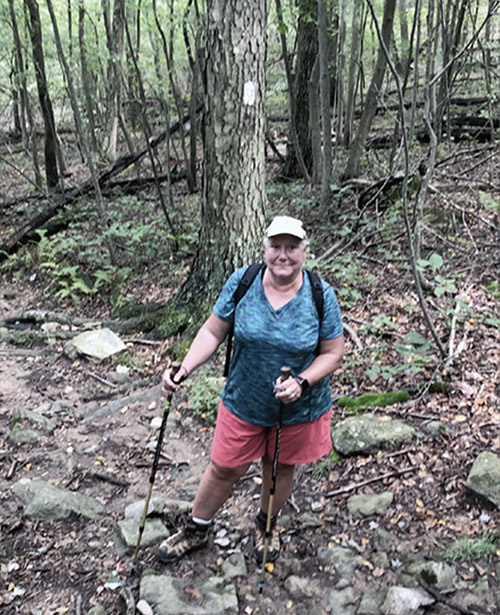
Responsibility

IT’S GREAT THAT THE ATC IS TAKING a strong stand for racial justice. When I thru-hiked the A.T. in 1978, I took note of the paucity of people of color. While my memory is somewhat hazy of some 42 years ago, I remember seeing black and brown hikers only in the Bear Mountain State Park area in New York and within maybe one or two large church groups on the Trail for a day hike. Through issues of A.T. Journeys, I’ve also taken note of the increasing deliberate efforts of the ATC to reach out to communities of color to involve them in Trail activities, including Trail maintenance, history, and use. I greatly applaud these efforts of ATC staff and A.T. volunteers up and down the Trail. Keep it going. You have my support.
Milton, Massachusetts
SANDRA MARRA’S COMMENTS (President’s Letter: “Shifting Perspectives and Realities” Summer 2020) show true insight into the long view of what the Trail should be. Let it be accepting to all, let us find mechanisms to make it more accessible to those who cannot afford getting to it, and let it be appreciated as more than just a foot pathway.
Washington, North Carolina



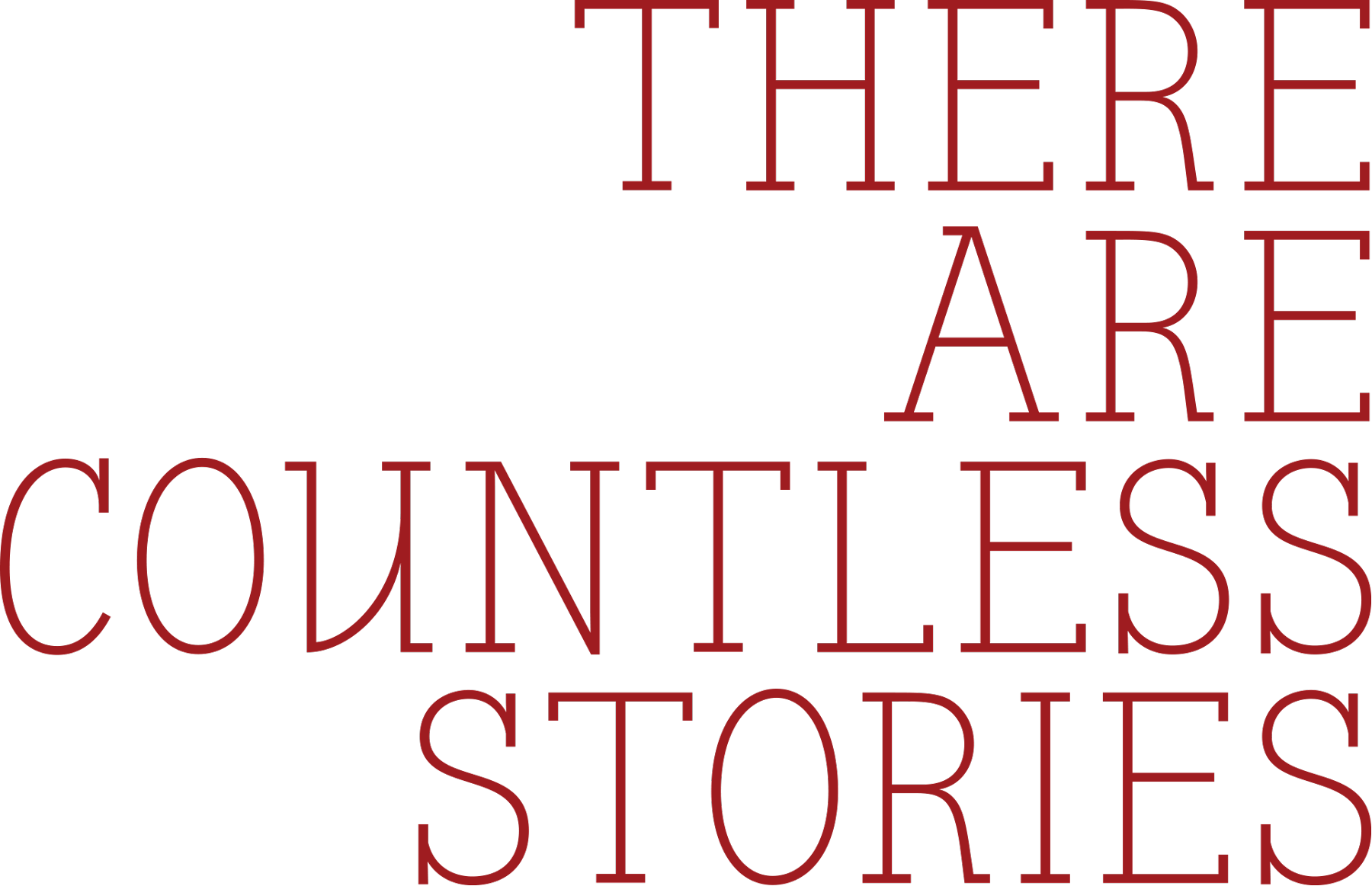

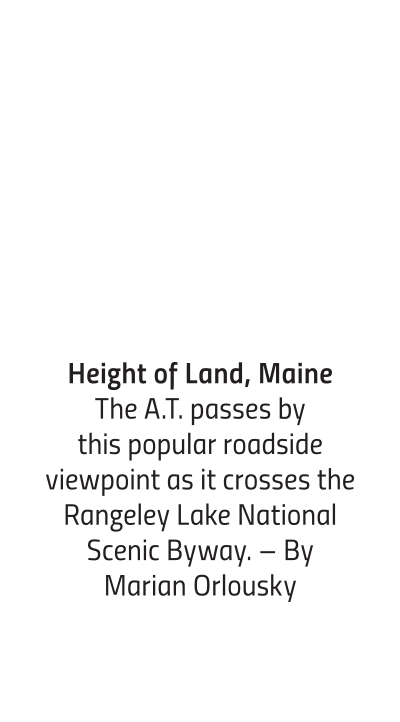

“This is a great day for our national parks, forests, and public lands, and the Appalachian Trail Conservancy sends its thanks for the overwhelming support the Great American Outdoors Act received from Congress, the President, and outdoor enthusiasts around the nation,” said Sandra Marra, president & CEO of the Appalachian Trail Conservancy (ATC). “The Act will help ensure irreplaceable national treasures like the Appalachian Trail are protected and have the funding they need to enhance safety and accessibility for future generations to enjoy and benefit from.”
![]() trailhead
trailhead
A.T. in Autumn near Delaware Water
Gap and Buttermilk Falls – New Jersey
– By Raymond Salani III
A.T. in Autumn near Delaware Water
Gap and Buttermilk Falls – New Jersey
– By Raymond Salani III
“What will not change, no matter how this decision impacts pipeline permitting rights, is the Appalachian Trail Conservancy’s [ATC]dedication to protecting, managing, and advocating for the A.T. in coordination with our federal, state, and regional partners,” says the ATC’s president and CEO Sandra Marra. “It is through this Cooperative Management System that we ensure the Trail has the resources and expertise required to protect the A.T. forever and for all to enjoy.”
![]() trailhead
trailhead

■ Jim LaTorre shared the key results of ATC’s 2019 finances and 2020 midyear financial highlights.
■ Sandra Marra shared the ATC’s 2021-2024 Strategic Plan. The objective of this plan is to strengthen the foundation of ATC, with a value on connection, as well as a focus on the upcoming 2025 centenary for the ATC.
■ A Q&A session, hosted by Sandra, Colin, and Jim, covered the topics of the ATC’s Justice, Equity, Diversity, and Inclusion work, the organization’s responses to the COVID-19 pandemic, and the value of ATC’s membership, among other topics.


A.T. visionary Benton MacKaye thought that the undeveloped power of people — if applied — could do great things, and he felt that it would be all the more meaningful if it were done of one’s own volition, which he described as leisure.


A.T. visionary Benton MacKaye thought that the undeveloped power of people — if applied — could do great things, and he felt that it would be all the more meaningful if it were done of one’s own volition, which he described as leisure.
“One hundred percent leisure,” responded 2019 Konnarock volunteer Deborah Carter McCoy when asked if she considered finding, hauling, cutting, and stabilizing rock for stone steps was leisure. “The reason I say that is I enjoy being outside. I enjoy gardening; granted, it’s not gardening. I enjoy being close to the Earth. My Konnarock work was an interesting way to be in nature, and close to the Earth in a way I’ve never experienced before. It was relaxing. You could see your progress. You were physically moving and working, but it didn’t feel like work,” she says. “I have an office job as a writer and editor and my profession is how I frame ‘work,’ so for me to do something completely different was fun. I was away from my desk. I didn’t have to look at the computer screen. I was able to shut my brain off in much the same way as when I am on vacation.”


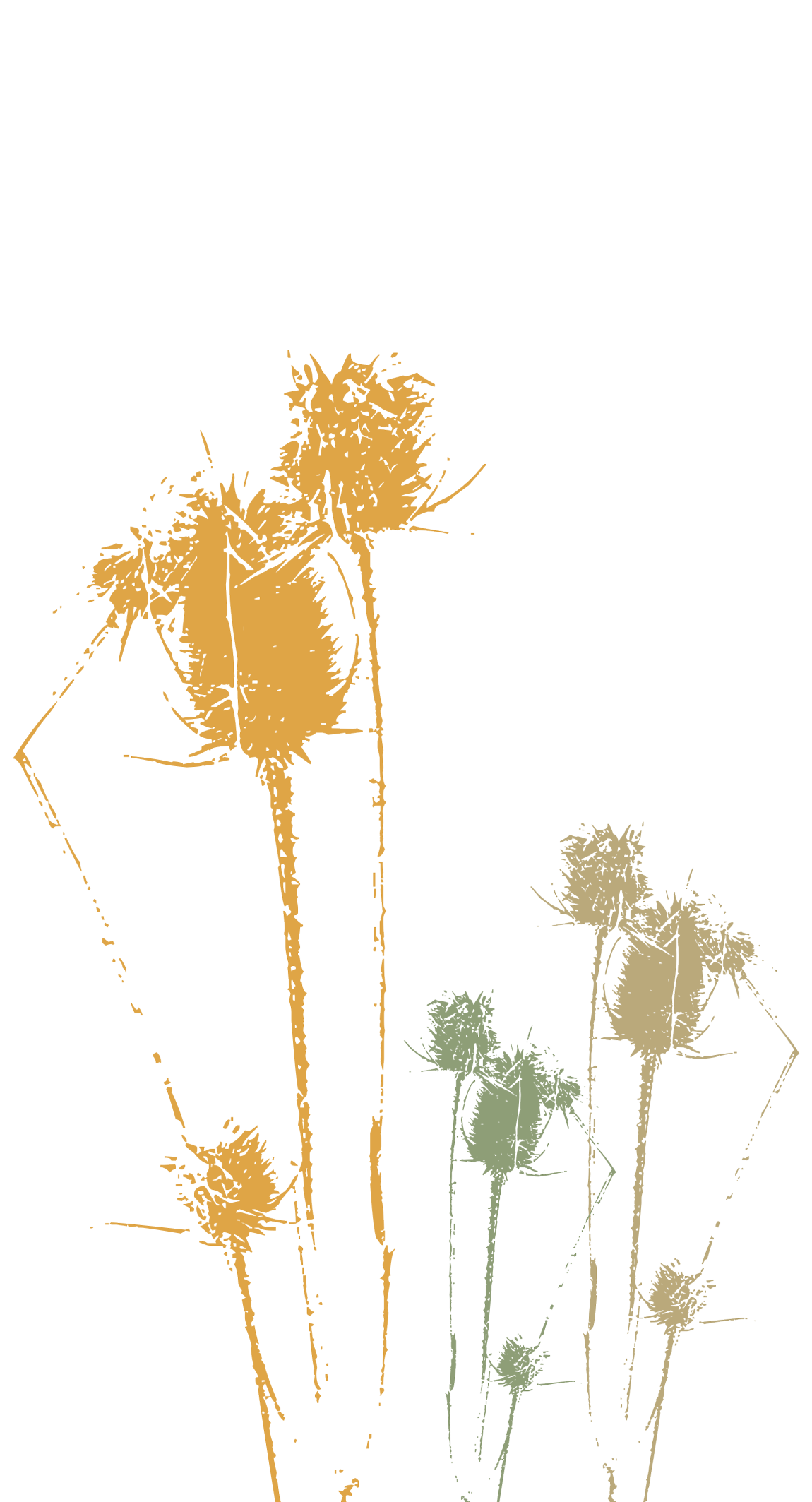


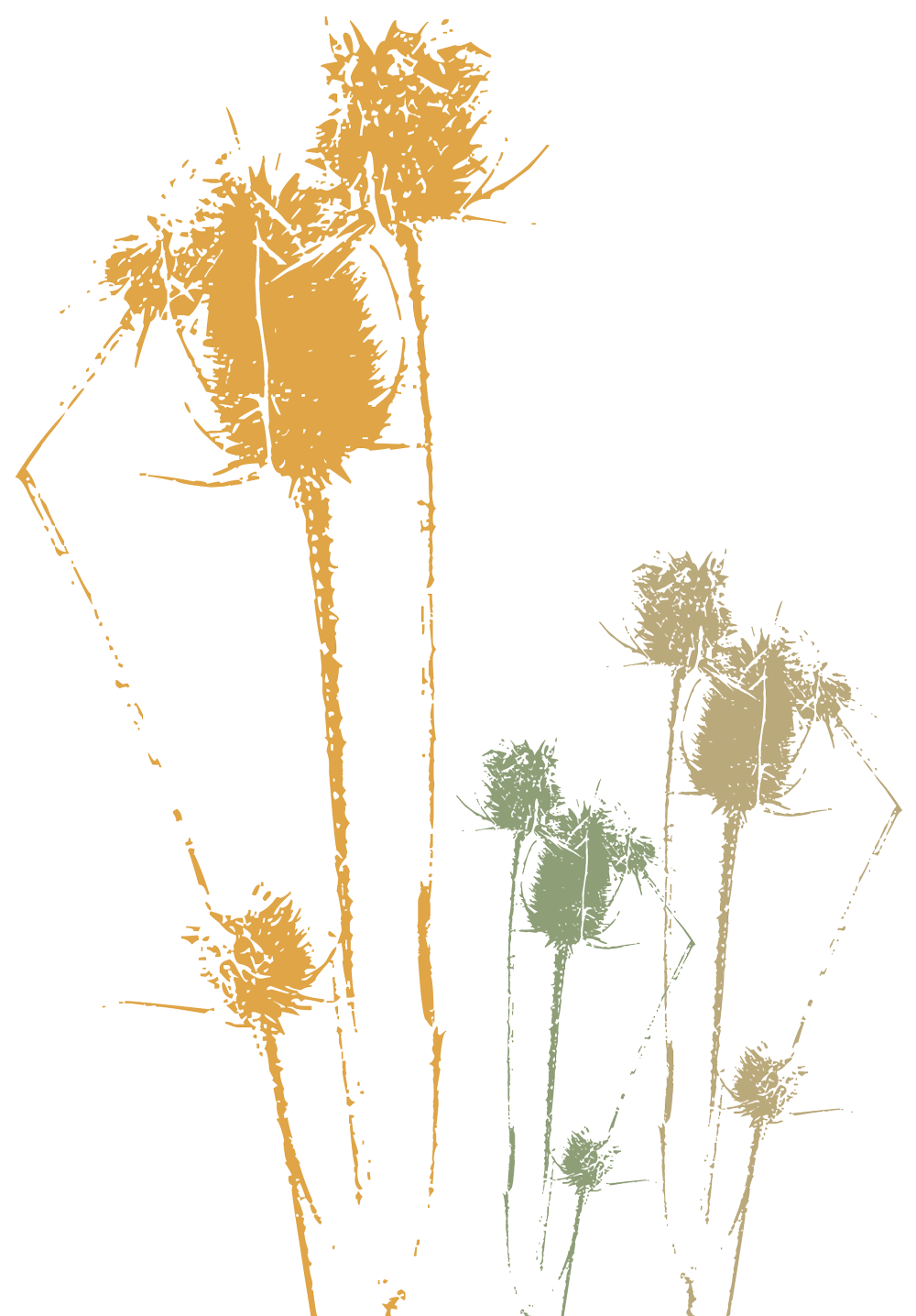


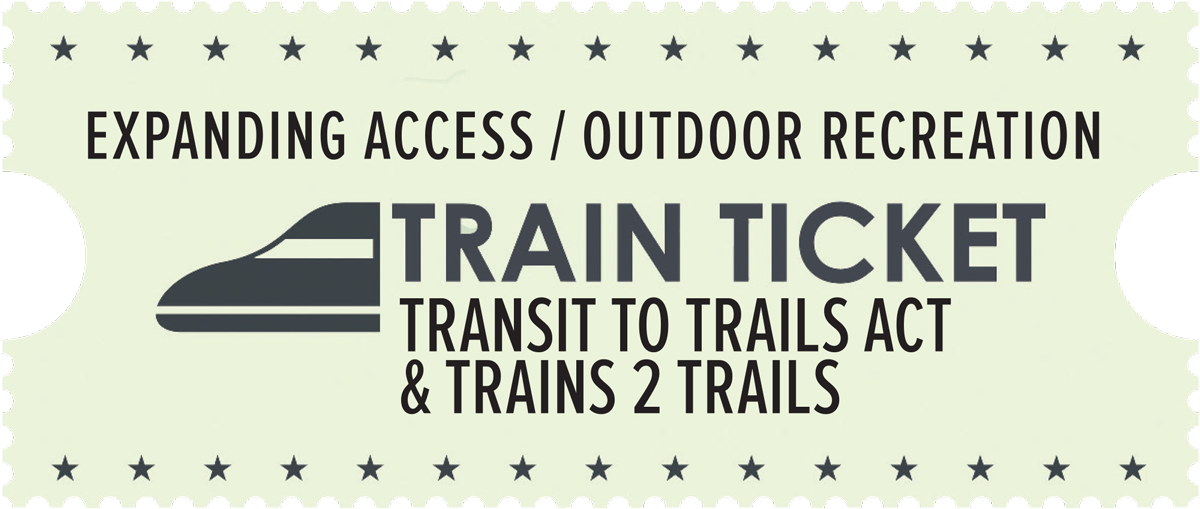
A.T. Pawling Boardwalk over the Great Swamp


Generation
Forest
Ambassadors

The phrase “love you” doesn’t exist in the Cherokee language. It must be claimed with the pronoun, GeGayYouAh, or I love you, to communicate its significance and meaning. Gil Jackson, of the Eastern Band of Cherokee, taught NextGen Forest Ambassadors words in his first language of Cherokee, along with other legends connected to lands that we now call our national forests and the Appalachian Trail.
Tysha Robinson
Eboni Preston

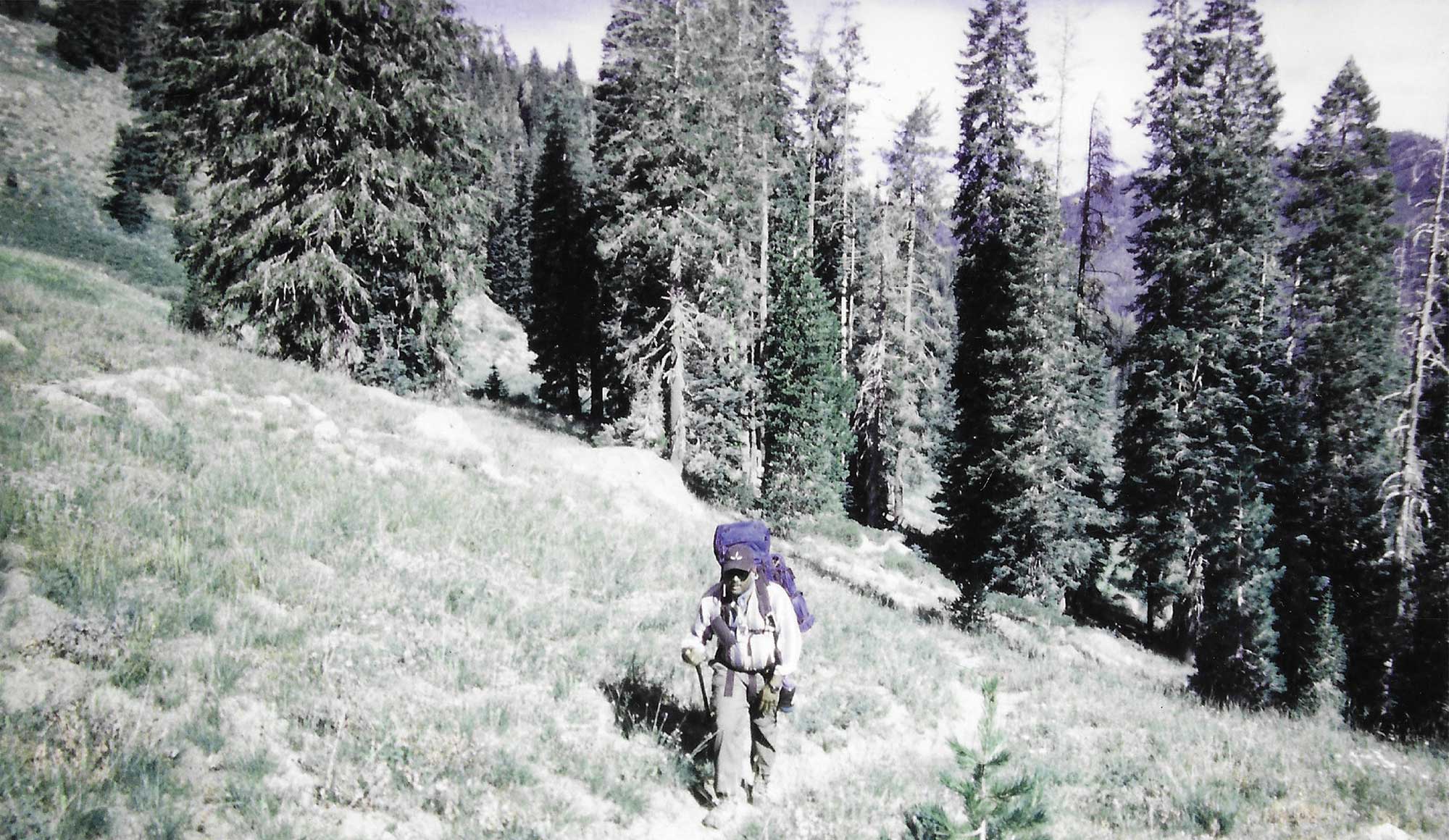

 y initial connections to the Appalachian Trail came about purely by fortunate accident. In the 1980s and 1990s, I spent lots of time backpacking and hiking as my primary reason for working — literally, in order to be able to afford to go hiking and exploring in as many spaces and places I could. In the process, I became very familiar with parts of the Appalachian Trail and I guided several hikes on sections familiar to me.
y initial connections to the Appalachian Trail came about purely by fortunate accident. In the 1980s and 1990s, I spent lots of time backpacking and hiking as my primary reason for working — literally, in order to be able to afford to go hiking and exploring in as many spaces and places I could. In the process, I became very familiar with parts of the Appalachian Trail and I guided several hikes on sections familiar to me. 
As this special summer came to a close, my life as I had known it came to what felt like a spinning halt. Within about a month, I found out that both of my parents were sick with cancer. My mom was diagnosed with breast cancer and my father with pancreatic cancer. I did not know what had hit me. Before I had even absorbed this new reality, my dad passed away in October 2015 and I put my life on pause to be with my mom as her primary caregiver.
Those were the longest fall and winter months that I can remember, or not — because I was experiencing the shock that can often accompany grief. But during the sadness of the long winter, the glimmer of an idea started to take root. I realized that the time for my own thru-hike had come. To me, it seemed like the best way to get out and begin to process the loss of my dad. I decided I would embark on my thru-hike in March of 2016. I was 22 years old.

As this special summer came to a close, my life as I had known it came to what felt like a spinning halt. Within about a month, I found out that both of my parents were sick with cancer. My mom was diagnosed with breast cancer and my father with pancreatic cancer. I did not know what had hit me. Before I had even absorbed this new reality, my dad passed away in October 2015 and I put my life on pause to be with my mom as her primary caregiver.
Those were the longest fall and winter months that I can remember, or not — because I was experiencing the shock that can often accompany grief. But during the sadness of the long winter, the glimmer of an idea started to take root. I realized that the time for my own thru-hike had come. To me, it seemed like the best way to get out and begin to process the loss of my dad. I decided I would embark on my thru-hike in March of 2016. I was 22 years old.


main on the
mend I am in
Maine on the
wagon on
Katahdin in
an animal
skin I am a
pencilmaker
breaking
a stolen mirror
metaphor over
the peak to
make Maine
lakes glint in
sun I broke
like a main
clause over
the forest of the
page and paused
to drink from a
literal canteen
I STUMBLED ON THE ROCKY Trail down from Blood Mountain, catching myself on my trekking poles. I could barely see. Rolling clouds of fog obscured the landscape, turning what I assume were stunning vistas into dense white walls. My eyes were clouded as well, but with brimming tears. I knew in my gut that I would have to leave the Appalachian Trail.
I dreamed of the A.T. for 10 years. I had hiked the A.T. Approach Trail in 2010 on a weekend trip with my parents. I vividly remember standing atop Springer Mountain and seeing the Trail continuing before us, twisting and turning and tempting me onward. That moment planted a seed in my soul, and I knew one day I would follow that enticing Trail along its entire length.

Brook
Trout
The name rolls off the tongue like cool water slides through mossy cobbles in a shaded mountain stream. And fitting that it should; it translates to little salmon of the fount, or spring. Eastern brook trout is a member of the salmonid family and shares many physical characteristics, but it is neither a salmon nor a trout. Fish in the Salvelinus genus are collectively called char and, along with the brook trout, include bull trout, lake trout, dolly varden, and Arctic char. Depending on who — or rather where — you ask, you’ll hear this native eastern fish called brook trout, brookie, squaretail, speckled trout, speck, coaster, salter, and other colorful names.
As the founder of @BrownPeopleCamping — a social media platform dedicated to promoting greater diversity in our public lands through storytelling and the power of visual representation — Ambreen Tariq utilizes storytelling to share how her life experiences as a Muslim, and a South-Asian American immigrant female have shaped her love for the outdoors.
In her day job, Ambreen is a non-practicing attorney who works for the federal government in Washington, D.C. As an Appalachian Trail Conservancy (ATC) Board member, she hopes to promote more diversity on the Trail. Through @BrownPeopleCamping, she has collaborated with various non-profit organizations and partners in the private sector to promote diversity in the outdoors. Her writing has been published in Outside magazine, and she has been profiled by the The New York Times, SELF magazine, CNN, Health, and Elite Daily among others. She is a brand ambassador for Merrell and formerly for Airstream and REI, and was celebrated as a BIPOC Outdoor Influencer by Matador Network. She is also the co-founder of Outdoor Muslims and sits on the advisory council for the Sierra Club.
Ambreen is featured in the book She Explores – Stories of Life-Changing Adventures on the Road and in the Wild and profiled in Falcon Guide’s Women Who Hike – a book that inspired the new ATC podcast of the same name. She has an especially deep devotion to youth education and has recently written her first book for children: Fatima’s Great Outdoors, about an immigrant family that embarks on their first camping trip in the Midwest.
“My goal is to promote more passionately for everyone to experience and enjoy the outdoors in their own authentic ways, ”Ambreen says. “I strive to achieve these goals in order to help grow our community of people who, having developed personal connections to the environment, will feel invested in protecting it and advocating for its future wellbeing.”
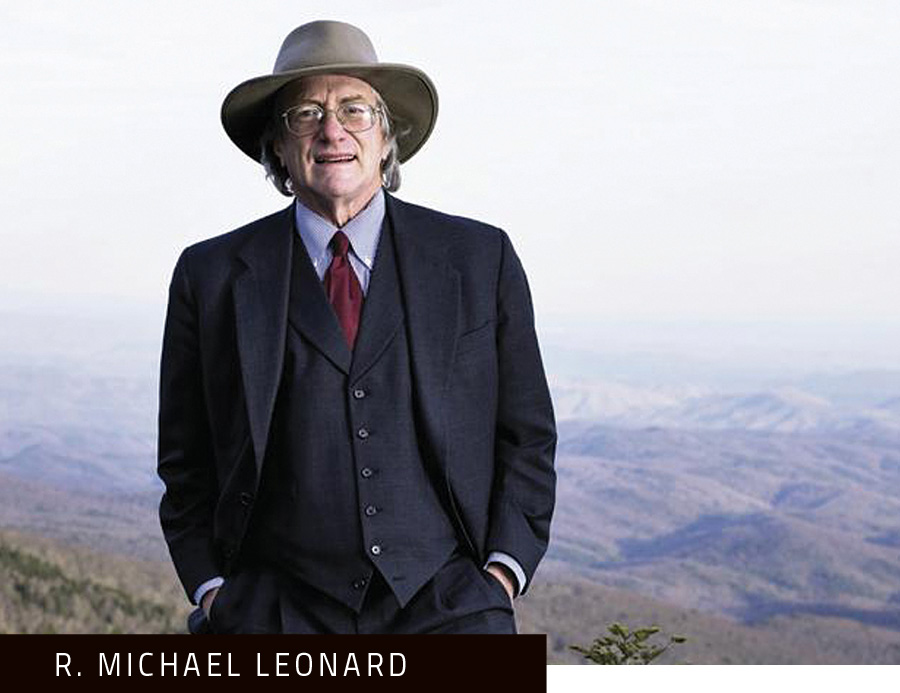
Mike Leonard’s first encounter with the Appalachian Trail happened when he was 16 years old during a camping trip with his older brother near Newfound Gap on the Tennessee/North Carolina border. “I saw the sign that gave the distance to Katahdin and it just fascinated me,” he says. “I told my brother I would like to hike at least part of that one day.” Sure enough, his first big adventure was later that year when he hiked with a couple of friends on the A.T. across the Smokies. “That trip had such a huge impact on me. We hiked up on Fontana Dam from Shuckstack and it struck me that working hard to get to that view added something that I had never experienced or could experience being in a car,” he says. “That hike was informative. Things that are hard to do are more rewarding than things that are easy to do. It became a mantra for me and changed the way I approached school and changed all kinds of things in my life. Doing it the hard way is the best.”
Mike is a partner at Womble, Carlyle, Sandridge & Rice in Winston-Salem, North Carolina, where he specializes in multi-jurisdictional litigation. He has logged many pro bono hours assisting conservation organizations with large land acquisition projects and the use of conservation easements, including trail corridor projects along the Appalachian Trail. He received his J.D. from University of North Carolina School of Law and he is the former chair of The Conservation Fund’s (TCF) Board of Directors. As a member of the Appalachian Trail Conservancy’s President’s Leader Circle, Mike brings an intense devotion to land conservation along the Trail. “I’m just proud to have some kind of role at [the] ATC,” he says.
“Land conservation is incremental. If you work at something year in and out, then what you can achieve over a 20 to 25-year period is astounding,” Mike says. “What non-profits like the ATC and TCF do is they keep going back. I’ve been working on land conservation since Jimmy Carter was President. In the land conservation arena, I can’t think of one administration where we have not achieved something. You just keep going back and [keep everyone focused]. They come and go. We don’t. We are always there.”
Trail Giving
As a former director of development at the Appalachian Trail Conservancy (ATC), I am often amazed by the sheer number of individuals who have been involved with ATC’s work for years, even decades. Bill Farkas was one of those individuals. For over 30 years, he was a longtime donor, Life Member, Horizon Society Member, open space enthusiast, and generally great friend to the ATC. I had the honor of getting to know him personally and was very saddened by his passing earlier this year.
Having worked at the ATC for over a decade, I had the pleasure of meeting and spending time with many volunteers and donors. Every donor has their own story about why they give. A few years ago, I shared some of Bill’s story in A.T. Journeys. He was so excited to be profiled and I had a unique experience in writing the article.
Growing up in Massachusetts, I learned about the Appalachian Trail during many family trips to Vermont and New Hampshire. I was fascinated by the idea of a path stretching over 2,000 miles and I dreamed of hiking it one day. Years later, after I started to compose music, my dream to hike became intermingled with the idea of composing a piece inspired by that hike. Armed with my hiking gear plus a small digital audio recorder and notebook of staff paper, I set off in the summer of 2016 with the Trail name “Mozart.” My plan was to hike the New England portion of the Trail and then compose an “Appalachian Trail Symphony.”
The symphony is divided into five movements — one for each state I hiked through — and each is roughly proportional to the length of Trail in each state: Connecticut’s 51 miles turns into two minutes of music while Maine’s 282 miles becomes about ten minutes. The symphony essentially compresses my two-month hike into a half hour of music. My hope is to transport listeners to the sites, sounds, and terrain as they move along with me on my journey.




